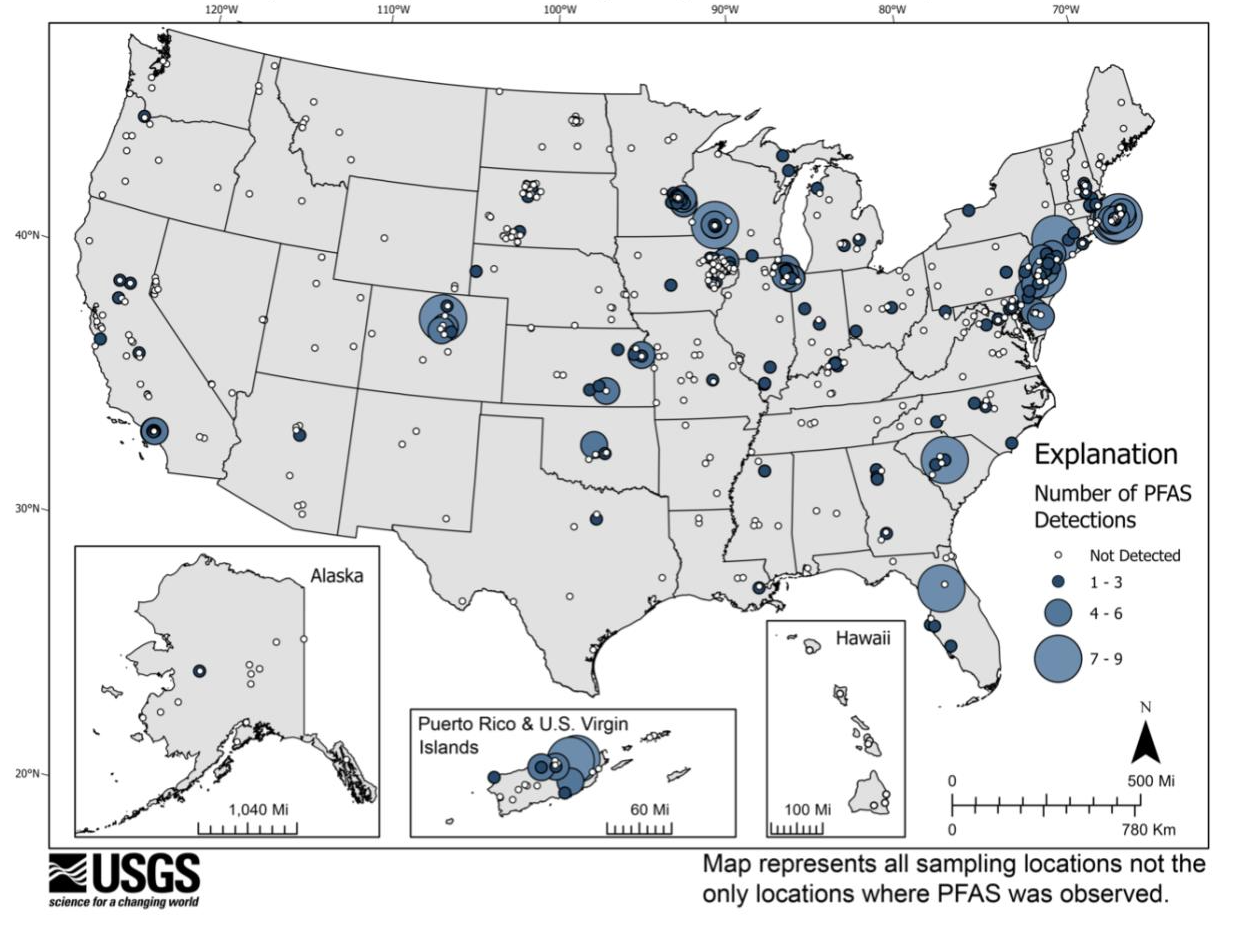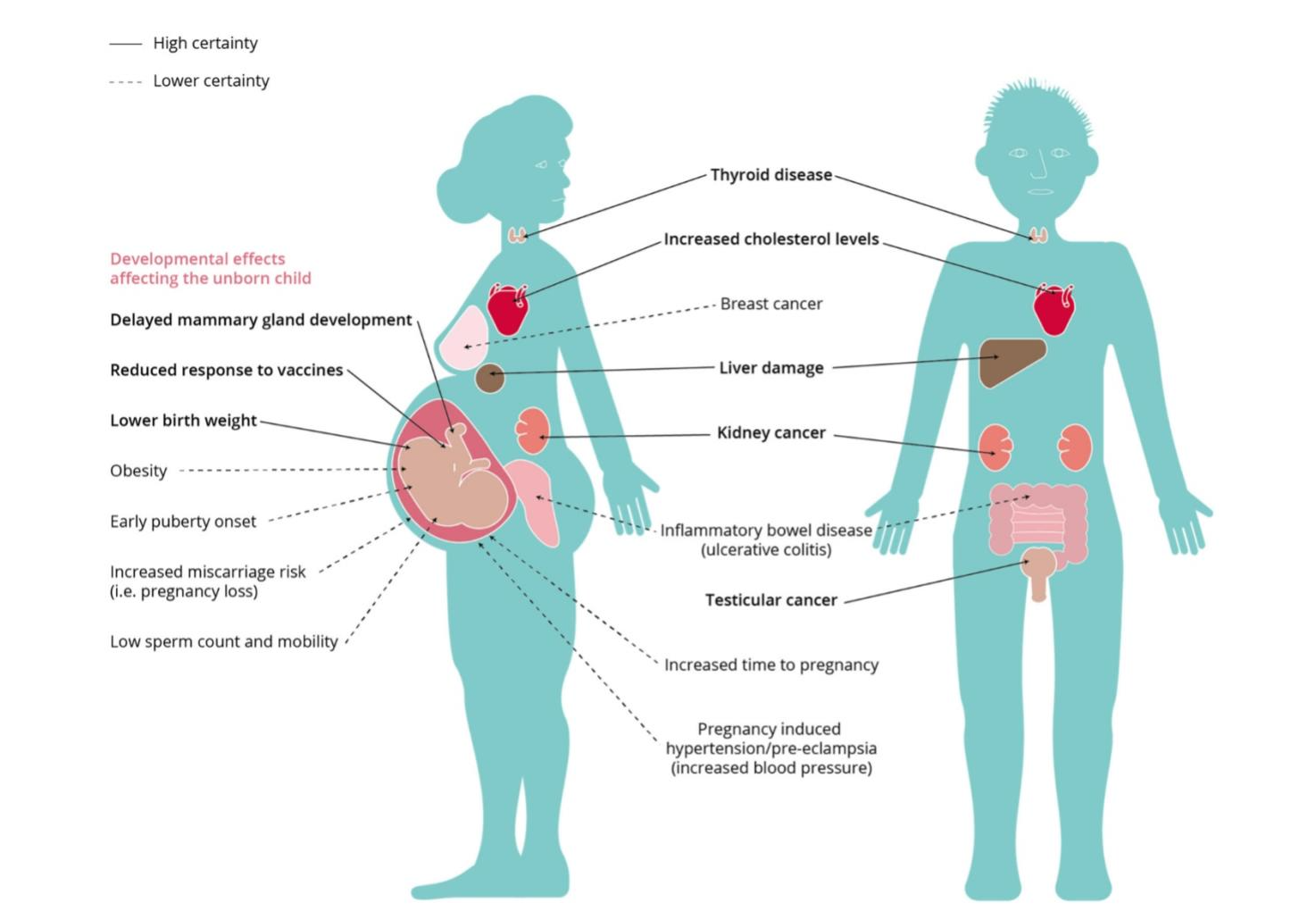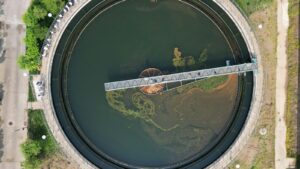What Are PFAS?
PFAS is an abbreviation for per- and polyfluoroalkyl substances. They are man-made chemicals widely used in packaging, cookware, fabrics, cosmetics, electronics, and medical equipment since the 1950s. The class contains more than 12,000 chemicals, prized for their ability to repel water, grease, and stains. PFAS’ chemical structure is incredibly strong and resistant to degradation. It therefore degrades slowly and builds up in water, soil, air, and organisms after each exposure.
Humans and animals are exposed to these chemicals through contaminated water, food, and air, often with higher rates of exposure near manufacturing centers. Proliferation of these chemicals is so ubiquitous that they have leached into soil. While rural areas suffer lower exposure, concern is mounting over contamination of food supplies.
But what are the consequences of human exposure and how large is the scope of this issue?
Scope, Severity, and Consequences
According to the Centers for Disease Control and Prevention, approximately 97% of Americans have PFAs in their blood stream. Fears here are nuanced as the science of PFAS is emerging. Not all PFAs are toxic, and many are currently difficult to identify in laboratory settings. The key focus of discussion on PFAS contamination sources has been tap water. The U.S. Geological Survey estimates that a minimum of 45% of American tap water is contaminated with PFAS. Key geographical concerns include Los Angeles, Denver, Atlanta, and the Washington D.C.-Boston corridor.
Per- and Polyfluoroalkyl Substances (PFAS) in Select U.S. Tapwater Locations

As reported in Environmental Toxicology and Chemistry and from the Environmental Protection Agency, PFAS have now been concretely linked to reproductive effects (decreased fertility, pregnancy complications), developmental issues in children (low birth weight, accelerated puberty, bone issues, behavioral conditions), increased cancer risk (prostate, kidney, testicular) poor immune/vaccine response, hormonal disruption, and increased cholesterol.

Recent legal rulings found 3M liable for $10.3B in damages over their contamination of drinking water systems with PFAS. DuPont de Nemours Inc. and spinoffs Chemours Co. and Corteva Inc. reached a similar $1.18B settlement in June 2023.
Innovators, Corporates, and Legislation
While PFAS have been used commercially since the 1950s, alarms raised by academic and government research sparked an influx of innovation and legislation. Innovators have popularized a select group of novel technologies such as adsorption (binding to PFAS and removing the pairs), filters (physically separate PFAS from water), oxidation (break down chemical bonds in PFAS to destroy them), thermal treatments, and novel methods like bacteria treatments.
Innovators of Interest:
- CycloPure: Develops unique DEXSORB equipment and adsorption for PFAS detection, testing, and treatment
- 374Water: Utilizes supercritical water oxidation technology to destroy PFAS in various waste streams
- Aquagga: Hydrothermal alkaline treatment to break down PFAS molecules in water
- Allonnia: Develops a bacterium used to destroy PFAS in groundwater, soil, and landfills
- Clean Earth: Offers a suite of services including PFAS treatment plants and mobile services utilizing thermal PFA destruction
- Aclarity: Commercializing electrochemical oxidation for PFAS destruction in water
Corporates Making a Difference
- DuPont: Progressively eliminated PFAS from their foams and operations while granting royalty-free licensing on PFAS membrane filtration technologies
- Xylem: Provides public water projects with PFAS removal ion exchange and oxidation technologies, testing equipment, and carbon filtration systems
- Evoqua: Provides public municipalities EPA-approved PFAS treatment systems utilizing adsorption technologies
Legislation
Legislators have focused on tackling specific industries, products, or companies through product or chemical bans. Federal associations have also allocated substantial funds toward infrastructure overhauls and treatment facilities:
- The EPA announced $2B in grants and infrastructure upgrades for PFAS testing and removal
- The EPA also released standardized metrics and methods for PFAS measurements and thresholds in drinking water, soils, and other vectors
- Maine and Minnesota established absolute bans in consumer products outside of a select few exceptions
- California, Colorado, New York, and Washington enacted bans across several consumer products
As researchers discover characteristics of PFAS and related harms, innovators and legislators have been energetic to meet the rising public health crisis. Continued government support to retrofit municipalities will be crucial to truly understanding the scale of this issue.


